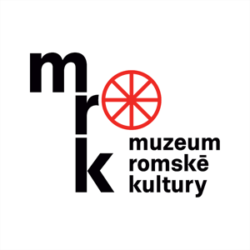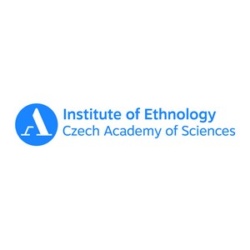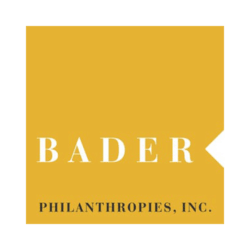František Holomek
František Holomek, born 1918, in Veselí nad Moravou; died 1981, Kyjov
-
Testimony abstract
František Holomek was assigned to a transport on 3 March 1943. Before that he had worked in Vienna, and so in Veselí nad Moravou he went to see a police officer called Samek from Vracov, saying that he needed to return to Vienna, where he had some money. But Samek told him he had to go, and so he and his whole family – his first wife and their four children – arrived at the Na Lapači inn in Veselí, from where they were taken to the Sokol centre in Staré Město near Uherské Hradiště and then by train via Ostrava to Auschwitz. On arrival[1] they were tattooed with numbers (he specifically names a Pole, Bogdan, a political prisoner, who tattooed them), had their hair cut and all their pubic hair shaved off. Twenty-one Holomeks and five Daniels came from Veselí nad Moravou; and from the immediate family, František Holomek's mother, brother and sisters. About the third day they had to go to the washroom. First they had to take a bath, and then they were given some kind of injection, after which he said they were “numb and stiff”. Then they immersed alternately in cold and hot water, which scalded them. The order to do this was given directly by Dr. Josef Mengele, and other doctors, including Polish ones, supervised them. They had to undergo this procedure every week throughout their imprisonment; he said it caused the deaths of some children and women.
He also recalled that in any kind of weather, even in winter, they had to stand barefoot and naked crammed together for two or three hours outside. First he was on blocks 16 and 21, and finally on number 14, where he was already with the woman he married after the war. There were three tiers of bunks in the barracks, each of which could accommodate eleven to twelve people, often a whole family. Food was brought by Jewish prisoners in barrels. At first the Holomeks had something to eat from home, but soon they had to eat camp food – beet soup with a piece of bread. They were given some coffee for breakfast; and he said that when he went home from work he would sometimes dig up dandelions and eat them.
First he worked to repair roads, shovelling all day. The guards beat them until some of them died, including his wife's grandfather. The corpses were piled up and in the evening cars took them to the crematorium. Later he began working in the canteen run by Polish prisoners, with whom he made friends;[2] he found work for his brother Štěpán there too. He collected empty fruit wine bottles. At first he had some money from home, and he describes how there was a brisk trade in money or vouchers and goods. The canteen was supervised by a German guard who gave them snacks, so they ate better than the other prisoners.
He contracted typhus in Auschwitz, but he said there was no treatment; one either survived or died. In the sick bay they gave injections, after which the person got a fever, and spots on his legs. He met Mengele, who examined the prisoners in the sick bay. Up to 200 people a day were dying of typhus, so Mengele started to check the kitchens and ordered them to start giving the children better food.
František Holomek said that the guards treated the Jews worse than they treated the Roma. The crematorium was in the woods near the camp, and at night smoke could be seen rising from the chimney. He was in Auschwitz for about 18 months when he learned from the Poles that he was going to be gassed. In the meantime, it was decided that young prisoners would not be killed if they could work, so he was transferred to Buchenwald concentration camp.
When the Czechs at Buchenwald learned that other Czech prisoners from Auschwitz were coming to the camp, they collected among themselves two or three sacks of bread for them. František Holomek worked in the quarry, breaking and carrying stone for the roads. The prisoners often died, some of them of hunger.
From Buchenwald he was taken to the Dora camp , where they were split up for work in the concentration camps Ellrich, Harzungen and Sachsenhausen, where Holomek was taken. That was where he lived to see liberation by the Red Army.[3]
- [1] They arrived at the Auschwitz II - Birkenau concentration camp on 8 March 1943. (ed.)
- [2] At first J. Zamowiecki, S. Schabenbeck and M. Perski, and later by B. Plonczak and S. Kwiatkowski when the former were discovered to have made mistakes. (ed.)
- [3] The Sachsenhausen concentration camp was liberated by the Soviet army on 22 April 1945. (ed.)
After the Liberation, Holomek spent about three more weeks in the camp, after which he was given a medical examination and was able to start his journey home. He walked with other Jewish prisoners, as they did not want to wait for the buses that took the prisoners to Prague. Besides him, out of the entire family, only his siblings Štěpán and Drahuša returned home to Veselí nad Moravou.
How to cite abstract
Abstract of testimony from: NEČAS, Ctibor, ed. Nemůžeme zapomenout = Našťi bisteras : nucená táborová koncentrace ve vyprávěních romských pamětníků. Olomouc: Univerzita Palackého, 1994, 144-146. Testimonies of the Roma and Sinti. Project of the Prague Forum for Romani Histories, https://www.romatestimonies.com/testimony/frantisek-holomek (accessed 4/19/2025) -
Origin of Testimony
The narration was freely recorded by Jitka Lukešová, who had it authorised. It was first published in her diploma thesis, “Gypsies in Veselí nad Moravou”, Brno, Faculty of Education of Jan Evangelista Purkyně University, 1979.
-
Where to find this testimony




